What Is Hip Pain?
Hip pain is any pain localized to the hip joint. The most common cause of hip pain is osteoarthritis (OA) but can also result from muscle and tendon strains and tears.
What Is The Anatomy Of The Hip Joint?
The hip joint or acetabulofemoral joint is a ball-and-socket joint that consists of the head of the femur (thigh bone) and acetabulum of the pelvis (See Figure 1). The acetabulum is a cup-like socket that is deepened by the presence of a fibrocartilaginous collar, the acetabular labrum. The head of femur (the ball) fits completely into socket. Both the acetabulum and head of femur are covered in articular cartilage. Articular cartilage is extremely slippery, decreases friction between the bones, and acts as a shock absorber. The hip is also comprised of muscles, ligaments and tendons, and the synovial membrane and fluid which encapsulates the hip joint and lubricates it. Damage to any of these tissues can cause hip pain and lead to OA.
Figure 1. Depiction of the bones of the hip joint. The hip "socket" or acetabulum is part of the pelvis. The "ball"-like head of the thighbone or femur fits into the acetabulum and is held in place with tendons, muscles, and the labrum which forms a ring around the socket (not shown). Covering the head of the femur and acetabulum is articular cartilage that breaks down in OA. Bone spurs also develop with increased joint friction causing pain and stiffness.
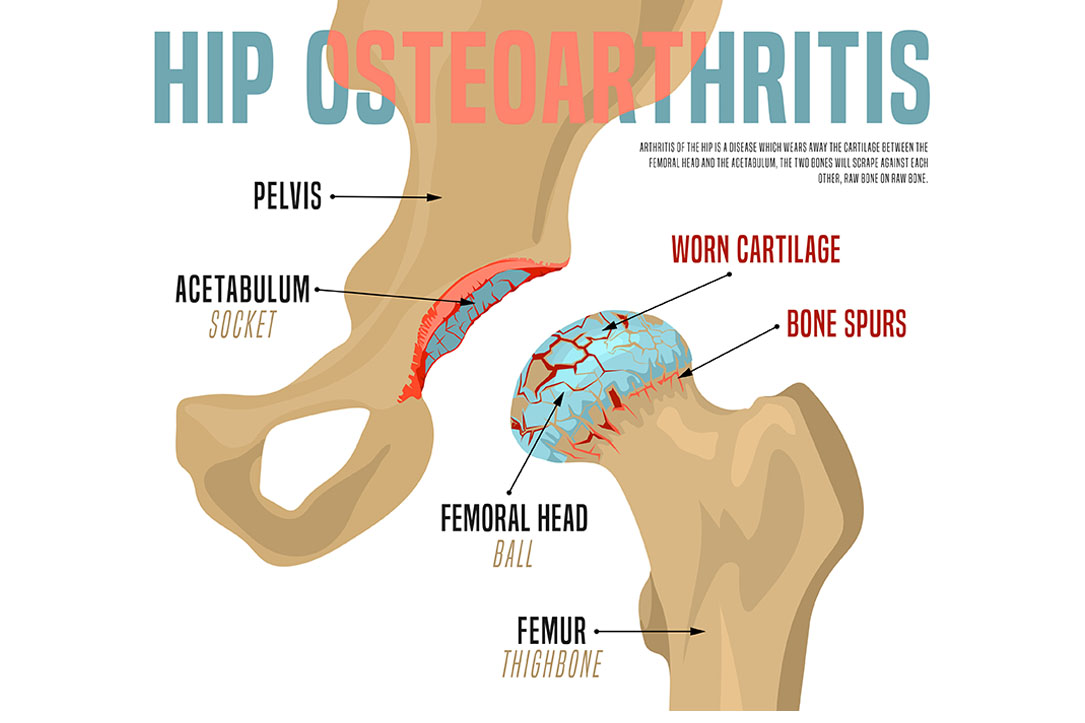
What Are The Symptoms Of Hip Degeneration, Hip OA, And Other Injuries?
The location and intensity of hip pain varies depending on the part of the hip that is injured. Fractures, torn cartilage/muscles/tendons, or pinched nerves all produce different pain symptoms.
Common Symptoms Of Hip OA And Other Causes Of Hip Pain Are:

- Joint pain. Commonly in groin/thigh, radiating to buttocks or knee, may worsen progressively.
- Stiffness. Morning stiffness or stiffness due to inactivity that eases with movement is common.
- Inflammation. Redness and warmth may accompany swelling in the hip.
- Locking of hip movement. OA may produce a catching sensation where hip movement is not smooth.
- Instability. Walking and gait abnormalities may develop. Decreased range of motion.
- Decreased range of motion. Over time the ability to fully squat or rotate may diminish.
- Crepitus. Crackling, popping, or squeaking sounds may emanate from the joint.
- Labral tear. Damage to the labral cartilage
- Sprains, tears. Tears to ligaments, muscles, or tendons in the hip can cause pain in different locations in the hip area. Damaged tendons can lead to hip tendonitis.
Age and repetitive activities (occupational or sports-related) are the primary causes of hip OA and other injuries to the hip. The following lists several other significant causes/risk factors:
- Sex. Women are more likely to develop osteoarthritis, this may be related to age-related nutritional deficiencies and hormonal changes (e.g., menopause).
- Obesity.Being overweight places excess burden on the body's joints and may increase the pace of cartilage degeneration as does a sedentary lifestyle.
- Hip impingement.Occurs when the ball of the femur doesn't fit into the socket of the pelvis correctly damaging the labrum or the articular cartilage. Groin pain is common.
- Rheumatoid arthritis. The body's immune system can attack the hip joint damaging the articular cartilage lining the acetabulum or head of the femur.
- Bursitis.Swelling and inflammation of the bursa (small fluid filled sacs that reduce friction between the hip bones and surrounding tissues) can cause pain and stiffness.
- Fractures.Trauma from accidents or from falls can partially or completely break bones in the hip making walking impossible in severe cases.
- Dislocation/dysplasia.Trauma or degeneration of the hip socket can cause the ball of the femur to become unseated from the socket.
- Sciatica. The sciatic nerve runs through the hip and when pinched or inflamed can cause lower back and hip pain that often radiates outward
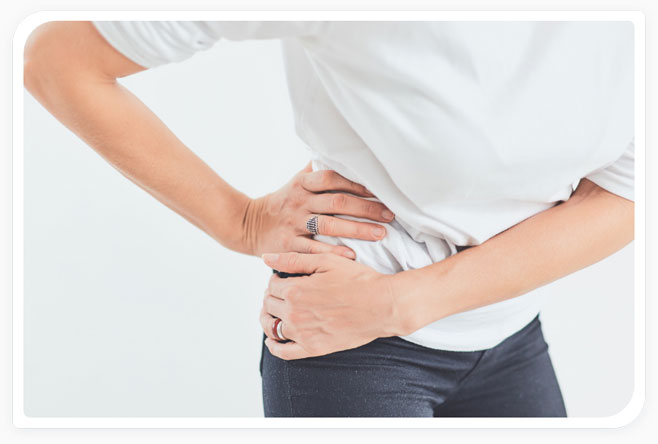
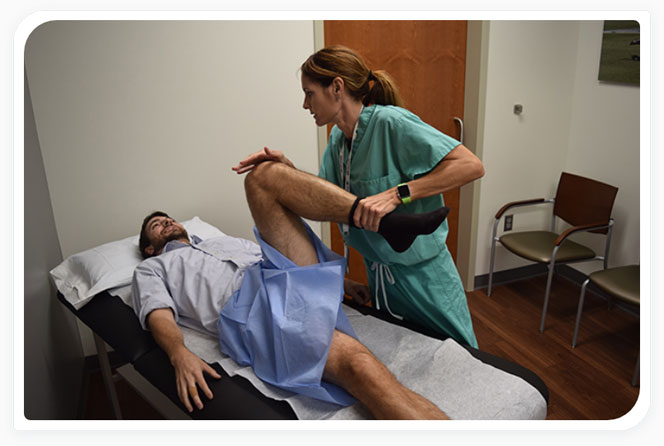
Our specialists base their diagnosis of hip OA and other causes of hip pain by using a multipronged approach:
- Medical History:Our doctors will ask you about the nature of your hip pain (e.g., when and under what conditions you experience hip pain). They will ask about prior surgeries, accidents, and trauma to the hip.
- Physical Exam: The doctor will test for hip degeneration by testing the range of motion, determine pain points, look for swelling, listen for any cracking or popping noises (crepitus), and test for muscle weakness.
- Imaging with X-Rays or MRI: X-rays can be used to help diagnose a degenerative hip joint or hip OA. Magnetic resonance imaging (MRIs) may be needed to determine if there is damage to surrounding muscles, tendons, or ligaments.
Treatment Options
The StemX clinic offers a range of customized Regenerative Medicine treatments to treat orthopedic injuries.
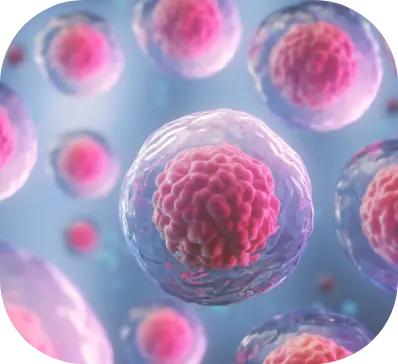

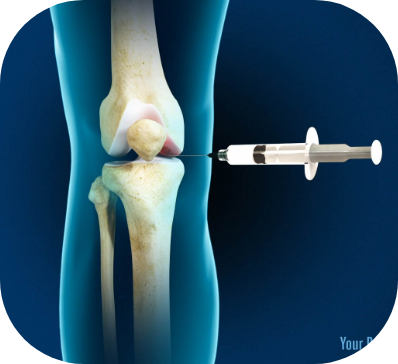
The StemX Approach
StemX is California's leading provider of holistic and regenerative medicine services. Our experts don't just offer popular treatments, but customized medical solutions based on individual needs.
Located in Solana Beach, California, the StemX clinic is composed of a team of expert doctors with years of experience administering regenerative medicine treatments for joint disease. Our team has:
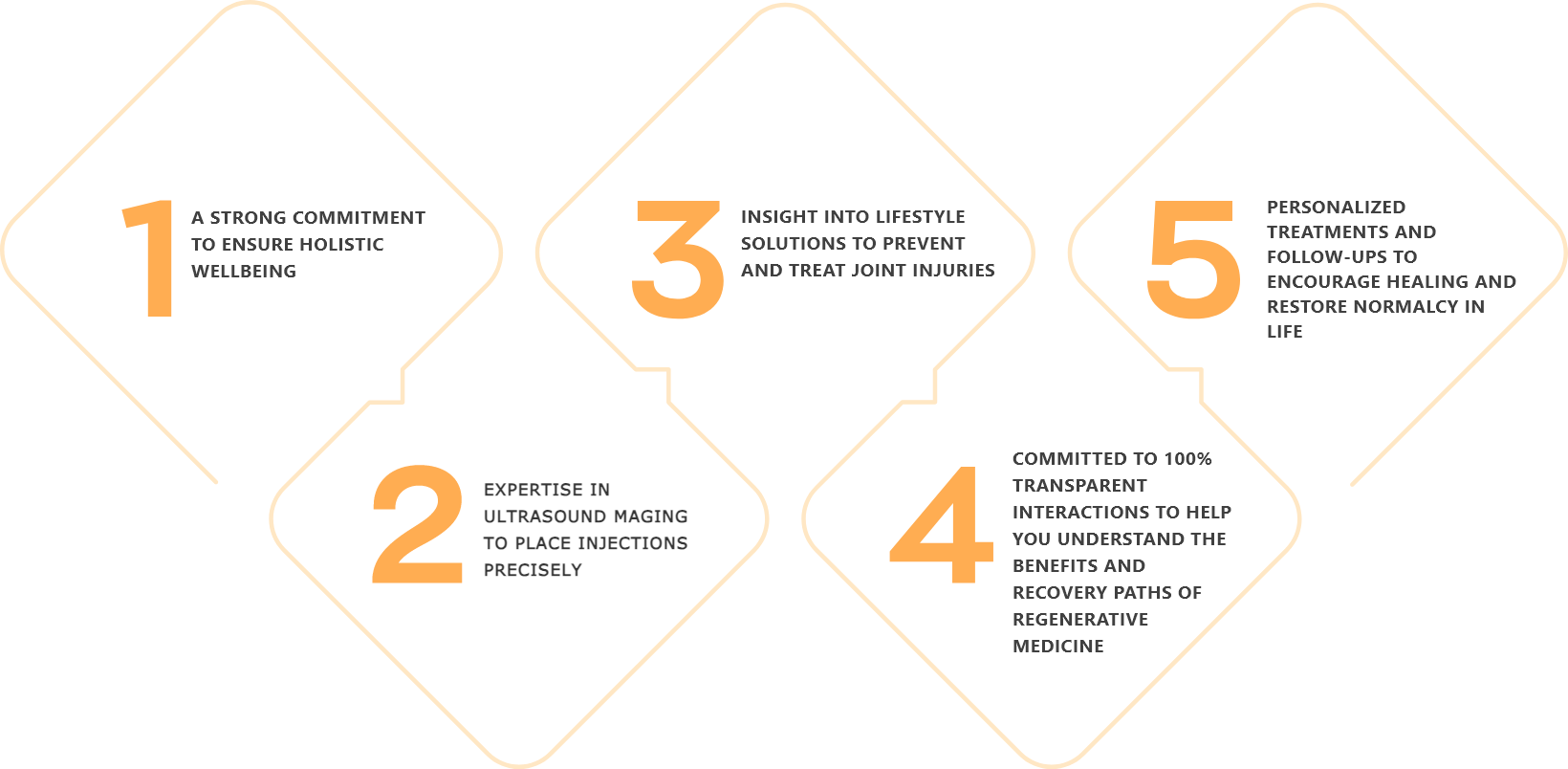

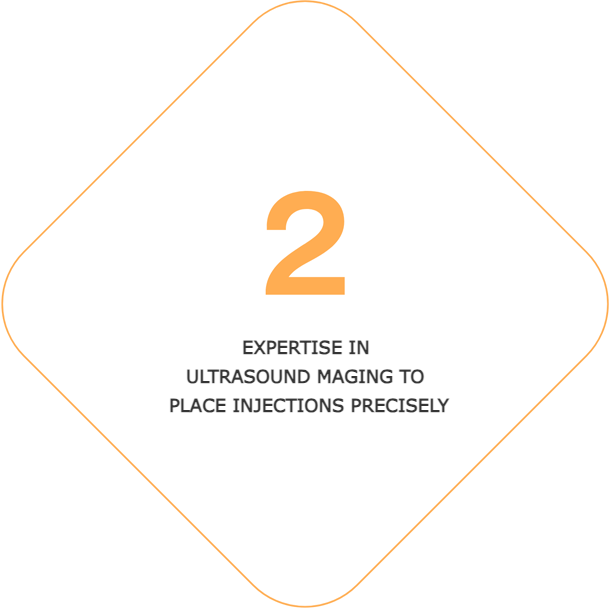
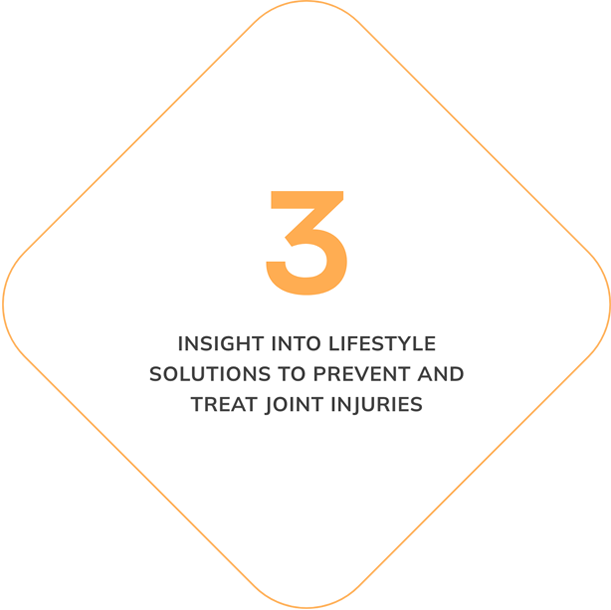
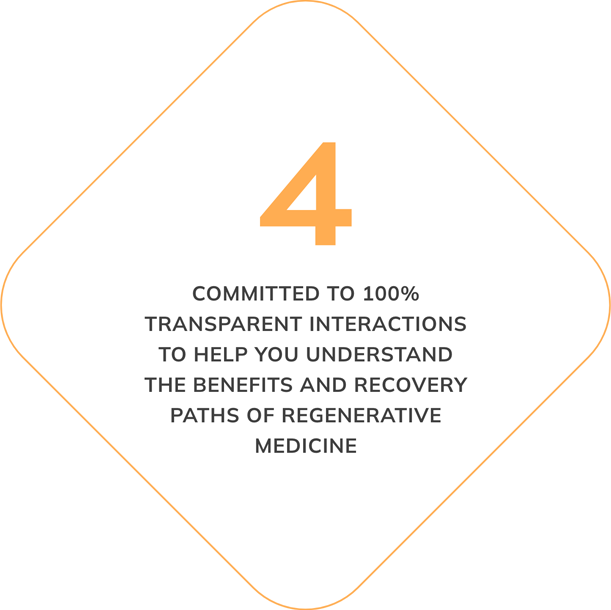
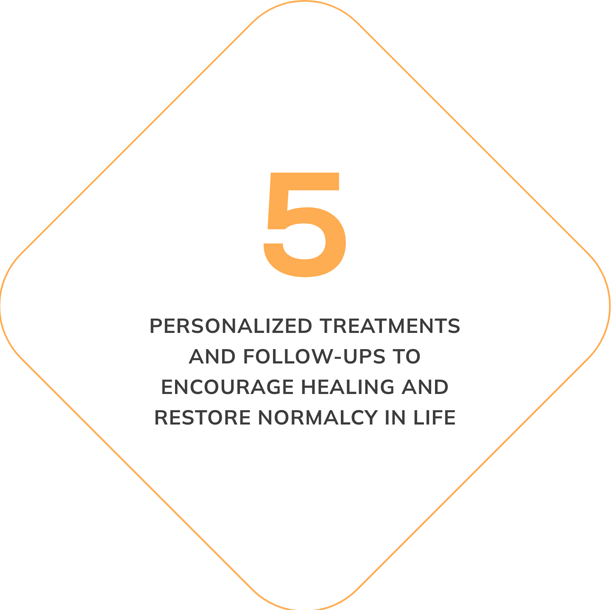
How To Get Started


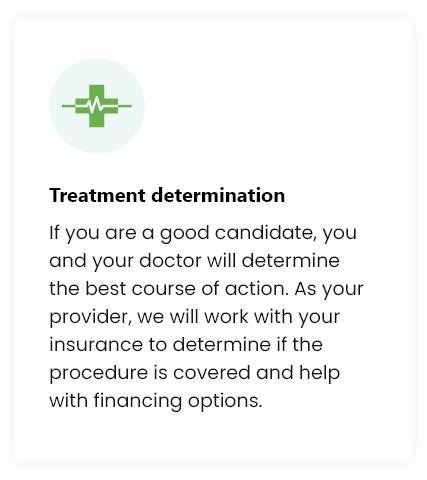

Treatment Procedure
While each treatment may be customized, you can expect your experience to be similar to the following:
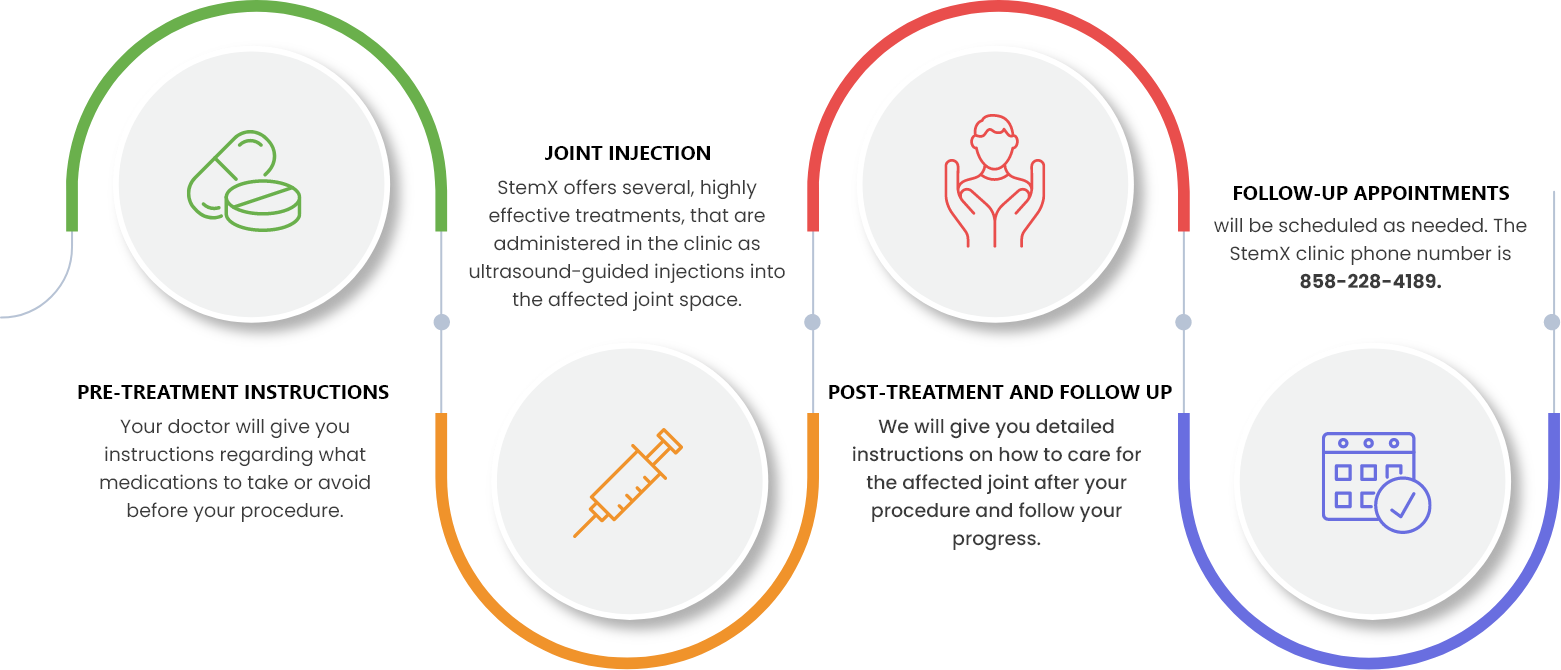
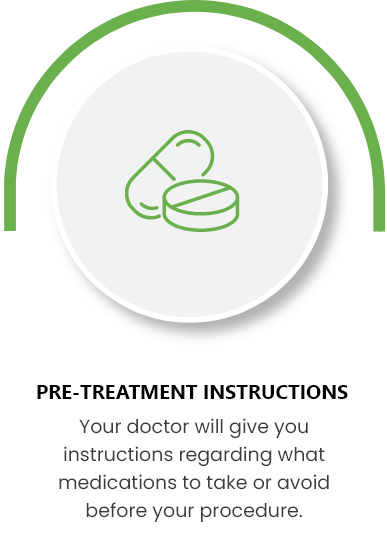
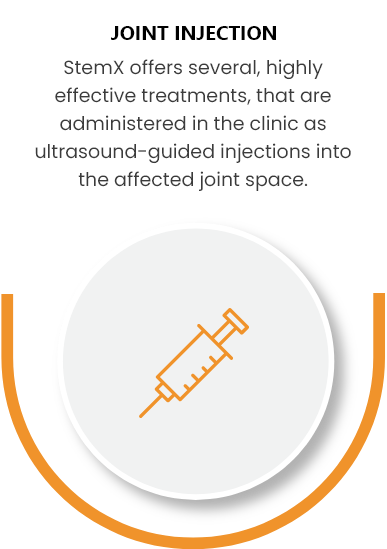
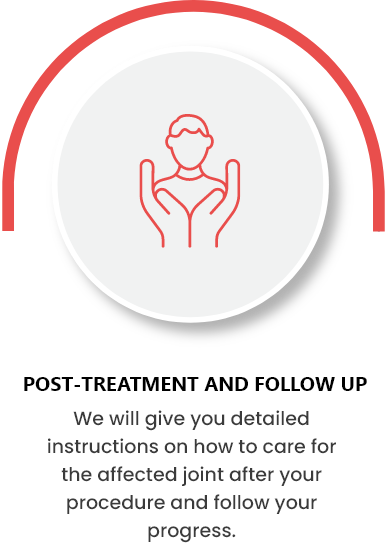
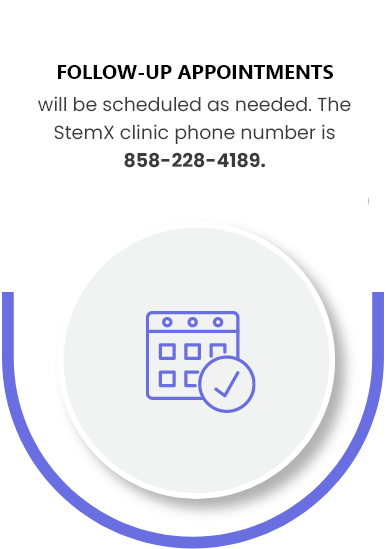
All procedures are conducted in our Solana Beach, California clinic. 124 Lomas Santa Fe Dr #206, Solana Beach, CA 92075.
Frequently Asked Questions
Pain in the hip or groin, limping, stiffness, swelling and sensitivity/tenderness are all signs of hip problems. However, the cause of the pain has likely been present for much longer.
One should seek medical treatment if hip pain is severe, doesn’t go away, clicking or popping sounds can be heard, if walking is affected, or if there is swelling, redness, or warmth in the area.
Arthritis can present as left hip pain or right hip pain. Hip pain from walking, joint stiffness, crepitus, and a loss of normal range of motion is common. Pain can be dull or achy.
Pain in the hip or difficulty walking can be signs of arthritis. Stiffness, loss of range of motion, or crepitus are also symptoms or hip arthritis.
Overactivity tends to cause flare-ups. Other causes can be weight gain, change in barometric pressure or weather, bone spurs, infections, or other injuries that increase the pressure on the hip.
Regenerative medicine treatments together with stretching for hip pain/physical provide a safe and natural treatment alternative with no side effects and helps patients avoid steroids and surgery.
Regenerative medicine injections typically produce minimal to no discomfort. Patients are guided to rest the joint which may be a bit sore after the injection.
Regenerative medicine treatments for arthritis hip pain typically take 6-12 weeks to fully take effect because they stimulate the body’s own healing mechanisms rather than by simply masking the pain.
Once cartilage is completely gone it cannot be regenerated. Regenerative medicine treatments, however, can stimulate chondrocytes to heal and replace damaged cartilage.



